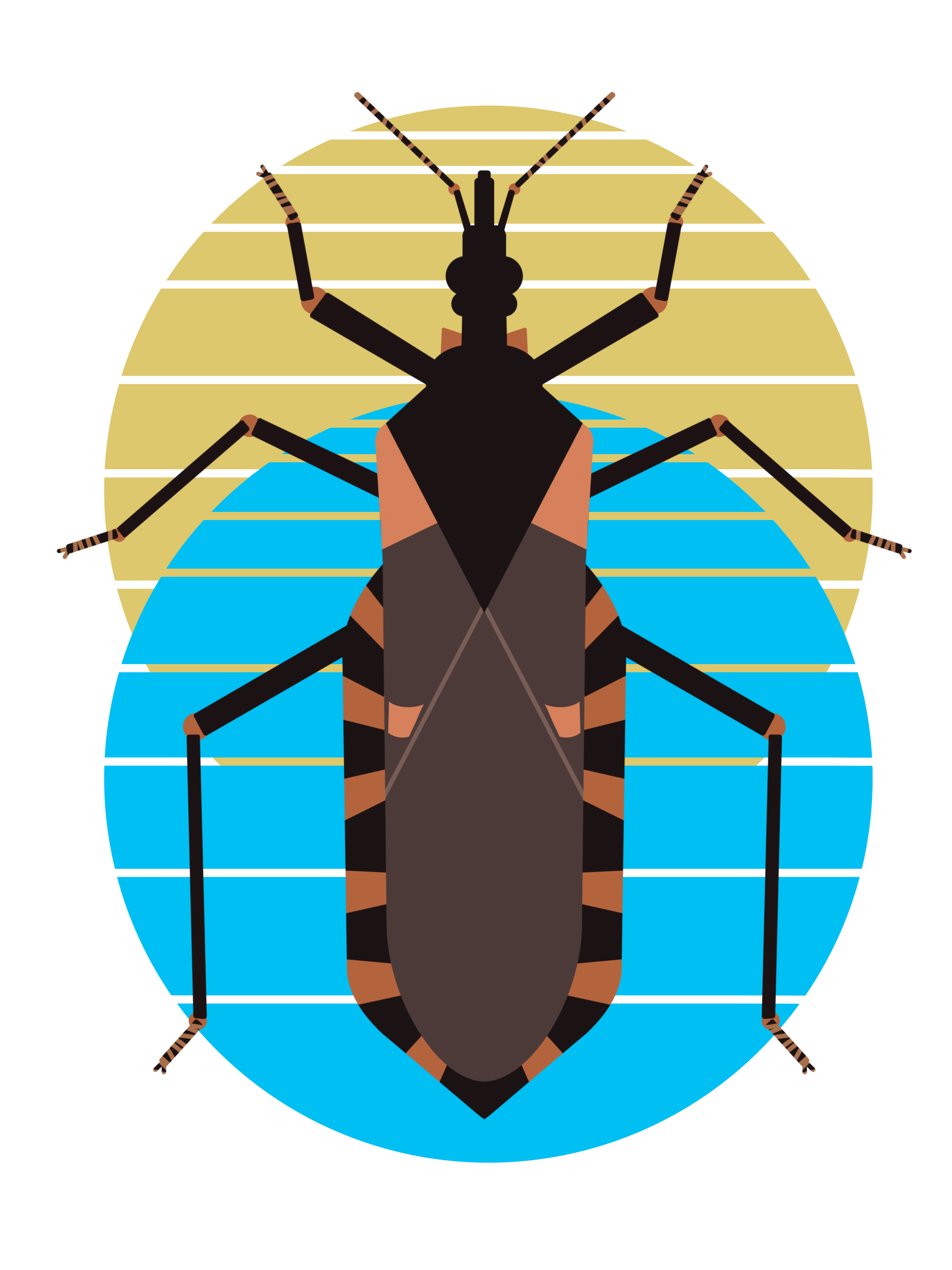Kissing Bugs in North America
If you live in the nothern Mexico or southern United States, you may spot a kissing bug (triatominae) in your neighborhood or even inside your house. You may question what makes them different from other insects and why we need to pay special attention to these creatures.
You probably have heard about the Chagas Disease. This disease is one of the most neglected tropical diseases. It is caused by the pathogen Trypanosoma cruzi, and it is estimated that more than 8 million people across the Americas are infected. The disease undergoes two phases, acute and chronic, with the symptomatology ranging from mild (e.g. skin lesion and a purplish swelling of eye lid) or asymptomatic during the acute phase to fatal (e.g. fever and difficulty in breathing) during the chronic phase[1][5]. The initial acute phase occurs from the point the pathogen enter the patient’s body to about two months after that[5]. Then, there is a chance for the patient to develop chronic phase in one to three decades later, which put the patients into the risk of destruction of the nervous system and heart muscle[5]. Chagas is a vector-borne disease, and the kissing bugs, the blood-sucking insects, are its major carriers[1].
Kissing bugs like to bite people’s faces, and this is also how they get their name. When feeding on blood, the kissing bugs inflate like balloons, and they could become infected with T.cruzi if the blood contains this pathogen. After digestion, their faeces and urine contain the T.cruzi. Humans become infected when their mucous membranes or break skin wounds get in contact with the feaces or urine of the kissing bugs [5], but transmission is also possible through contaminated blood transfusions and organ transplantations, through ingestion of contaminated food [5][6] and from mother to baby in utero[5][1]. Other animals, for example non-human primates (e.g. monkeys)[3] and American barn-owl (Tyto furcata)[4], become infected by eating the kissing bugs.
If you think kissing bugs live in your neighborhood, don’t leave your food on the table uncovered, or the kissing bugs may dump their waste on your snacks. If you are worried about Chagas, please talk to your healthcare provider. If, unfortunately, you get bitten by a kissing bug, don’t scratch your kissing bug bite (which increases the chance of kissing bugs’ feaces contacting the skin wounds), and consult your healthcare provider for medical advice. Your healthcare provider could help you with or connect you to specialists for blood tests and treatment. You could check out Centers for Disease Control and Prevention and Texas Department of State Health Services websites to learn how to take precautions.
You may have loads of kissing bug questions to ask. So Do we!
Here is our list of questions, and they form the foundations of our research.
- Can we model kissing bugs’ suitable habitat distribution?
- Can we predict the kissing bugs’ future suitable habitat distribution based on their current distribution?
- How will climate change influence kissing bugs’ suitable habitat distribution? Chagas is one of the diseases which stays close to poverty and socially vulnerable groups. Climate justice is important.
- How can we obtain more kissing bug data (both presence observation and samples which are sent to lab for testing)?
What distinguish our research from previous studies?
- Richer data sources - including research-grade citizen science data
- Focuses on the impact of climate change by producing future projection under CMIP6 climate change scenarios.
- Ready for integrating with flood simulation.
We are preparing for the publication. Please be patient with us. The following information will be shared on our website this fall:
- North America kissing bug database
- Interactive map for this database
- Interactive map for kissing bug suitable habitat distribution

[1] CDC – National Center for Health Statistics. “Parasites - American Trypanosomiasis (also known as Chagas Disease)”. 13 Apr. 2022. https://www.cdc.gov/parasites/chagas/index.html. (accessed 11 May 2023)
[2] Eberhard, Fanny E., et al. “Modelling the climatic suitability of Chagas disease vectors on a global scale.” Elife 9 (2020): e52072.
[3] Hodo, Carolyn L., et al. “Trypanosoma cruzi transmission among captive nonhuman primates, wildlife, and vectors.” EcoHealth 15 (2018): 426-436.
[4]Martínez-Hernández, Fernando, et al. “Trypanosoma cruzi, beyond the dogma of non-infection in birds.” Infection, Genetics and Evolution 99 (2022): 105239.
[5]World Health Organization. “Chagas Disease (Also Known as American Trypanosomiasis)”. 6 Apr. 2023. https://www.who.int/news-room/fact-sheets/detail/chagas-disease-(american-trypanosomiasis) (accessed 11 May 2023).
[6] Rodrigo de Oliveira Andrade. “Açaí fruit can transmit Chagas disease”. 11 Jan. 2019. https://www.scidev.net/global/news/a-a-fruit-can-transmit-chagas-disease/ (accessed 11 May 2023).
